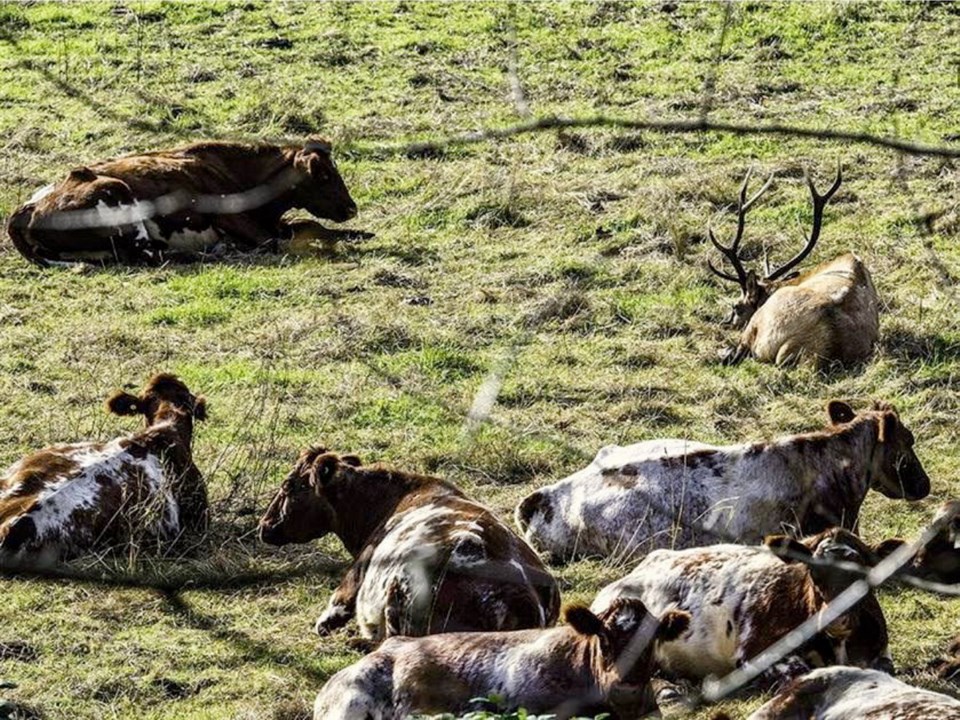First came the provincial government’s reintroduction of Roosevelt elk from the Sunshine Coast to a series of wilderness watersheds from the Squamish River Valley to Harrison Lake.
Then the elk starting showing up unexpectedly in urban communities bordering those watersheds, including in Maple Ridge alongside the bustling Lougheed Highway.
Now it appears the animals have crossed the Fraser River into the heart of the Fraser Valley, including a bull elk that has taken refuge with cattle in a farm field on the south side of Sumas Mountain in Abbotsford.
Helmi MacGregor is an Abbotsford resident and amateur photographer who spotted the elk by chance this week and snapped a photo with her 400-millimetre lens. “I looked down this gully and there’s a rack on this cow,” she recalled with a laugh. “He was just so beautiful. Wildlife like that is so neat to see out here.”
Provincial biologist Darryl Reynolds, the driving force behind the elk relocations, said his best guess is that the bull elk is from the Stave Lake watershed north of Mission (across the Fraser from Sumas Mountain) and that hormones prompted him to roam.
“Autumn is the breeding season for elk and males wander looking for opportunities to establish harems,” he said from Sechelt. “They are also very social animals and find security in groups.”
There’s also always a chance that it migrated north from neighbouring Washington state, although crossing the Highway 1 freeway woud have posed a daunting challenge.
Whether this elk can eke out an existence in its new habitat remains to be seen.
Reynolds said the animal “has got himself in an awkward place in the Fraser Valley and is now resting in the security of a group of cattle likely following having been pushed around, spooked by people driving fast cars,” farm equipment and curious passersby. He encourages people to give the elk space, adding he hopes it eventually returns to the mountains.
Elk were hunted out of the Lower Mainland around the turn of the last century.
Twenty elk were reintroduced to the Stave watershed in 2006-07, and 23 to the nearby Pitt River watershed in 2004-05 as part of a larger, ongoing program to return the species to southwestern B.C., with funding assistance from the provincial Habitat Conservation Trust Foundation.
The hope was that the elk would stay in the mountains where there is abundant habitat and avoid conflicts in urban areas. There have been scattered reports in recent years of elk from north Langley to the Chilliwack Valley.
Postmedia reported in 2013 numerous sightings of elk near Lougheed Highway at Kanaka Creek Regional Park in Maple Ridge. One observer described it like seeing Sasquatch, the event was that unexpected.
Motorists are asked to be vigilant for elk near areas where they have been released.
The Roosevelt, named after the late U.S. president Theodore Roosevelt (1858-1919), is the largest of six sub-species historically found in North America, with males weighing up to 400 kilograms.



